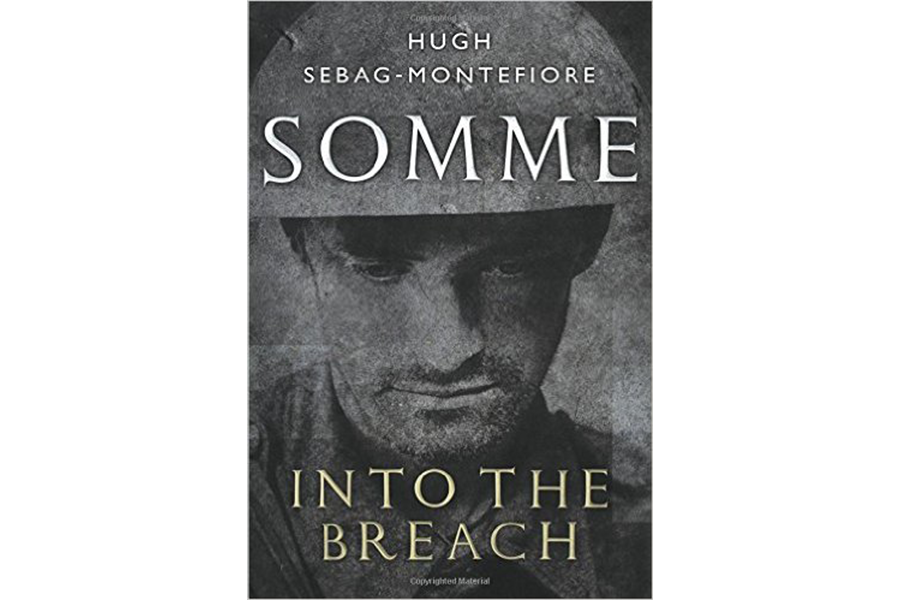'Somme' puts a human face on a massive military catastrophe
Loading...
2016 marks the 100th anniversary of a battlefield catastrophe that stands out in a kind of unwanted, lonely prominence even in the bloody annals of military history: On July 1, 1916, the Allied forces of Britain and France launched an all-out attack, the long-awaited “Big Push,” against German forces on the banks of the Somme River.
General Sir Douglas Haig, commander-in-chief of the British Expeditionary Force (BEF) in France, in conjunction with General Sir Henry Rawlinson, commander the British 4th Army tasked with spearheading the offensive, envisioned a fairly neat sequence of events: A massive artillery bombardment would so soften up the German lines, then in its wake Allied soldiers would be able to climb out of their trenches and perform only the lightest mopping-up exercises while marching virtually unimpeded into enemy territory. The one-two combination would finally break through the trench-warfare stalemate in France that had frustrated Allied commanders for months.
After nearly two million British shells were lobbed across No Man's Land, the Allied attack began early in the morning of July 1. Soldiers went “over the top” and began advancing toward the shattered landscape of the German front lines. “They are coming!” went the cry all through the German troops, as Hugh Sebag-Montefiore dramatizes in his big new book Somme: Into the Breach; “It was a cry that was repeated again and again, all along the attack line to the south, as more and more British troops, over a vast area, were seen to be advancing.”
But the massive bombardment hadn't worked its expected magic; the Germans hadn't been flattened or driven back, and the damage the shells did to the countryside and the German trenches created swaths of broken ground ideal for improvised machine gun emplacements. Those Allied soldiers who'd gone “over the top” found themselves walking into a horrifying field of fire. “It was,” as Sebag-Montefiore writes, “a disaster waiting to happen.”
The initial results have become emblems of the wastage of war. Entire ranks of men were leveled in instants; battalions were devastated; thousands of bodies were torn to indecipherable pieces by unremitting gunfire. The British casualties alone by the end of that first day were in excess of a staggering 57,000 (with at least 19,000 dead). It was the single bloodiest day in the history of the British military, and it's been seen for most of the ensuing century as a bitterly perfect illustration of the madness and futility of the military imbalances of World War I. It became shorthand for battlefield insanity brought on by clueless, hidebound generals, resulting in the loss of an entire generation of bright-faced young men.
Sebag-Montefiore's book studies the whole breadth of the Somme debacle, from that blistering first day to the exhausted and mud-caked final weeks in late November. He sifts through volumes and volumes of original documents, attempting always to put a human face on every single moment and aspect of the campaign.
He shows us Lieutenant-Colonel Kyme Cordeaux writing to his wife Hilda during that initial bombardment on July 1 wondering what “the little fledgling swallows in the nest above my bed think of it all,” and going on to guess that they'll be “deaf for the natural time of their lives.”
He utilizes the intimate archives of letters, diaries, and dispatches to produce a far more detailed and individualized portrait of the subject than earlier big single-volume treatments like Peter Hart's "The Somme" in 2009, or Martin Gilbert's "The Somme" in 2006, or "The Somme" by Robin Prior and Trevor Wilson in 2005.
Each of the individual battles that made up the whole of the Somme is given a rigorous and very readable account of its own, from Fricourt and Mametz to Delville Wood and Montauban to Fromelles and Guillemont. The narrative moves easily from the larger logistical tangles back at headquarters to the experiences of the men fighting in the front lines, and Sebag-Montefiore is every bit as authoritative writing about the birth of air and tank warfare as he is picking apart the psychologies of the men involved.
“Many soldiers have talked about the red mist that descends over their normal sensibilities when in the midst of battle,” he writes. “That has its uses, for it helps to banish fear.”
There will never be a last word on the Battle of the Somme, Sebag-Montefiore concludes. By the time it was all over, each side had lost half a million people – and yet virtually nothing had been gained, and the German lines had mostly held firm. Our author echoes the verdict of some historians that the bloodbath of the Somme prompted the German command to pause its offensive at Verdun, and likewise he brings up the frequently-made contention that the vicious pounding the German forces underwent at the Somme effectively broke their spirits, guaranteeing an eventual Allied victory.
Such things may be true, although they would have been cold comfort to the thousands of men cut down on either side of the river a century ago. At least those men get to speak again, in this enormously satisfying book.






